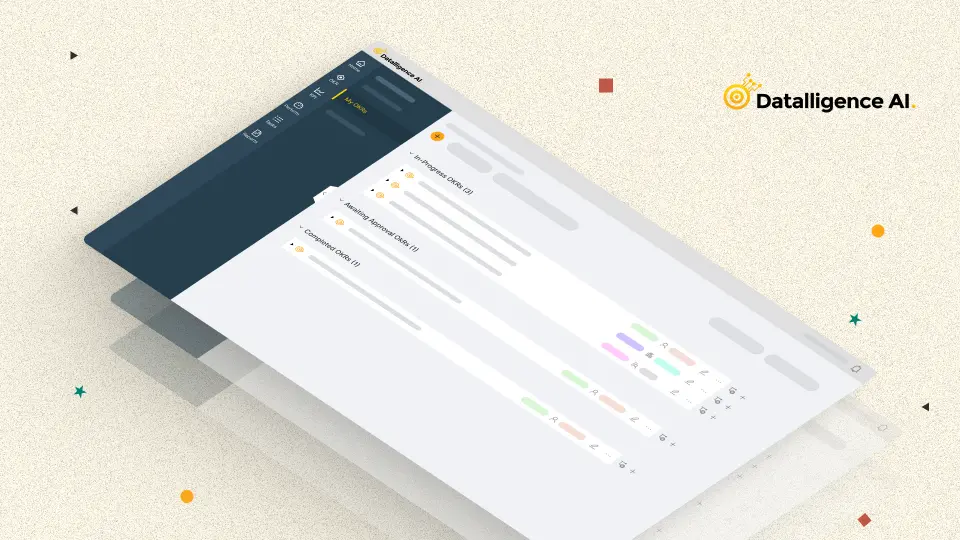The rise of remote work has revolutionized the modern workplace, offering increased flexibility and opportunities for employees. However, managing remote teams presents unique challenges, especially when it comes to performance management. To overcome these challenges and ensure the success of remote workers, organizations can leverage performance management tools designed specifically for remote work environments. These tools provide the necessary structure, communication channels, and data analytics to optimize performance management and foster productivity, engagement, and growth within remote teams.
In this article, we will explore the importance of performance management in remote workers settings and how performance management tools can support and enhance remote performance management. We will delve into various approaches and strategies employed by these tools to facilitate goal setting, feedback, monitoring, and evaluation in remote teams. By implementing these tools effectively, organizations can overcome the inherent obstacles of managing remote teams and unlock the full potential of their remote workforce.
The Importance of Remote Performance Management
Managing performance in a remote work environment is crucial for several reasons. Firstly, remote performance management helps establish clear expectations and goals for remote employees. Without the physical presence and daily interactions of a traditional office setting, remote workers may experience a lack of clarity regarding their roles,responsibilities, and performance standards. Effective performance management provides remote employees with the necessary guidance and direction to align their efforts with organizational goals.
Secondly, remote performance management promotes accountability and productivity. By setting clear expectations and monitoring progress, managers can ensure that remote employees remain focused, motivated, and engaged. Regular feedback and performance evaluations provide opportunities for recognition, improvement, and course correction, contributing to enhanced productivity and performance within remote teams.
Thirdly, remote performance management fosters effective communication and collaboration. Remote workers often face challenges in terms of communication and teamwork. Performance management tools designed for remote work environments offer communication channels and collaboration features that facilitate seamless information exchange, idea sharing, and collaboration among remote team members. These tools bridge the gap between distributed team members, enabling effective teamwork and coordination.
Lastly, remote performance management supports employee growth and development. By providing feedback, coaching, and training opportunities, managers can help remote employees acquire new skills, enhance their performance, and progress in their careers. Investing in the professional development of remote workers not only improves individual performance but also contributes to overall employee satisfaction, engagement, and retention.
The Role of Performance Management Tools in Remote Work
Performance management tools designed for remote work play a crucial role in streamlining and optimizing performance management processes in remote teams. These tools offer a range of features and functionalities that support goal setting, feedback, monitoring, evaluation, and collaboration in remote work environments. Let’s explore some of the key ways in which performance management tools support remote performance management.
1. Goal Setting and Alignment
Effective goal setting is the foundation of performance management, and performance management tools enable remote teams to establish clear, measurable, and achievable goals. These tools provide a platform for managers to communicate goals, track progress, and ensure alignment between individual and organizational objectives. Remote employees can access their goals, monitor their progress, and receive regular updates and feedback through these tools. By facilitating goal setting and alignment, performance management tools empower remote employees to focus their efforts, prioritize tasks, and contribute to the overall success of their teams and organizations.
2. Continuous Feedback and Coaching
Performance management tools enable remote teams to maintain a culture of continuous feedback and coaching, which is essential for remote performance management. These tools provide dedicated channels for managers and employees to exchange feedback, offer suggestions, and address performance-related issues. Remote employees can receive timely, specific, and constructive feedback on their work, helping them identify areas for improvement and make necessary adjustments. Managers can also provide coaching and support to remote employees, helping them develop their skills, overcome challenges, and reach their full potential. Performance management tools ensure that feedback and coaching are ongoing processes, fostering growth and improvement within remote teams.
3. Performance Monitoring and Evaluation
Monitoring and evaluating performance in remote teams can be challenging due to the lack of physical presence and real-time observation. Performance management tools solve this challenge by providing mechanisms for remote performance monitoring and evaluation. These tools enable managers to track key performance indicators (KPIs), measure progress against goals, and analyze performance data in real-time. Remote employees can input their progress, update task statuses, and provide regular updates on their work through these tools. Performance management tools also facilitate performance reviews and evaluations, allowing managers to assess individual performance, provide formal feedback, and make informed decisions regarding promotions, rewards, and career development opportunities.
4. Collaboration and Knowledge Sharing
Effective collaboration and knowledge sharing are essential for remote teams, and performance management tools provide the necessary infrastructure to facilitate these processes. These tools offer features such as document sharing, virtual meeting rooms, and team communication channels that enable remote employees to collaborate, share ideas, and work together seamlessly. Performance management tools also foster a sense of community and connectivity among remote team members, mitigating the potential feelings of isolation and disconnection that remote work can sometimes create. By promoting collaboration and knowledge sharing, performance management tools enhance team dynamics, innovation, and problem-solving within remote teams.
5. Data Analytics and Reporting
Performance management tools leverage data analytics and reporting capabilities to provide insights into remote team performance. These tools collect and analyze performance data, such as productivity metrics, KPIs, and employee feedback, to generate reports and visualizations that highlight trends, patterns, and areas for improvement. Performance management tools enable managers to make data-driven decisions, identify performance gaps, and implement targeted strategies to enhance remote team performance. Data analytics also provide valuable information for performance evaluations, goal setting, and resource allocation within remote teams
Best Practices for Remote Performance Management
To effectively leverage performance management tools and optimize remote performance management, organizations should consider implementing the following best practices:
1. Customize Performance Management Tools to Fit Remote Work Context
Performance management tools should be tailored to the unique needs and challenges of remote work environments. Organizations should select tools that offer remote-specific features, such as virtual meeting capabilities, document sharing, and real-time collaboration. Customization should also include adapting performance management processes, such as goal setting and evaluation criteria, to accommodate the remote work context. By customizing performance management tools and processes, organizations can ensure their effectiveness in supporting remote performance management.
2. Foster a Culture of Open Communication and Feedback
Effective remote performance management relies on open communication and continuous feedback. Organizations should foster a culture that values open and transparent communication, encourages feedback exchange, and promotes active listening. Managers should provide regular feedback to remote employees, acknowledging their accomplishments, addressing performance gaps, and offering guidance for improvement. Remote employees should also be encouraged to provide feedback to their managers and peers, facilitating a two-way feedback loop that drives growth and collaboration.
3. Establish Clear Goals and Expectations
Clear goal setting is crucial for remote performance management. Organizations should establish clear, measurable, and achievable goals that align with organizational objectives. Managers should communicate these goals to remote employees using performance management tools, ensuring that expectations are clearly defined. Remote employees should have a clear understanding of their roles, responsibilities, and performance standards. Regularly reviewing and updating goals based on changing circumstances is also essential for remote performance management.
4. Encourage Regular Check-Ins and One-on-Ones
Regular check-ins and one-on-one meetings between managers and remote employees are essential for building relationships, providing individual attention, and offering feedback. Organizations should encourage managers to schedule regular check-ins with remote employees to discuss progress, address concerns, and provide support. These meetings should be conducted using performance management tools, leveraging features such as video conferencing and screen sharing to facilitate effective communication. Regular one-on-ones enable managers to stay connected with remote employees, provide personalized guidance, and foster a sense of belonging within remote teams.
5. Leverage Data Analytics for Performance Insights
Performance management tools provide valuable data analytics capabilities, and organizations should leverage these insights to drive performance improvement. Managers should analyze performance data, such as productivity metrics and KPIs, to identify trends, patterns, and areas for improvement within remote teams. Data analytics can help managers make data-driven decisions, implement targeted strategies, and allocate resources effectively. Regular reporting and visualization of performance data also facilitate transparency, accountability, and goal alignment within remote teams.
Conclusion
Performance management in a remote work environment presents unique challenges, but with the right tools and strategies, organizations can optimize remote performance and achieve exceptional results. By implementing objective measurements, setting weekly goals, monitoring key performance indicators, gathering feedback, and utilizing collaboration or project management software, organizations can empower their remote workforce to thrive. At Datalligence.Ai, we understand the importance of effective remote performance management. Our performance management tools are designed to support your organization’s remote work success by providing a comprehensive platform for goal setting, progress tracking, feedback exchange, and collaboration. With Datalligence.Ai, you can unlock the full potential of your remote teams and drive performance excellence in the digital age.
So, embrace the power of performance management tools and unleash the productivity, engagement, and growth of your remote workforce. Experience the difference with Datalligence.Ai and take your remote performance management to new heights.











